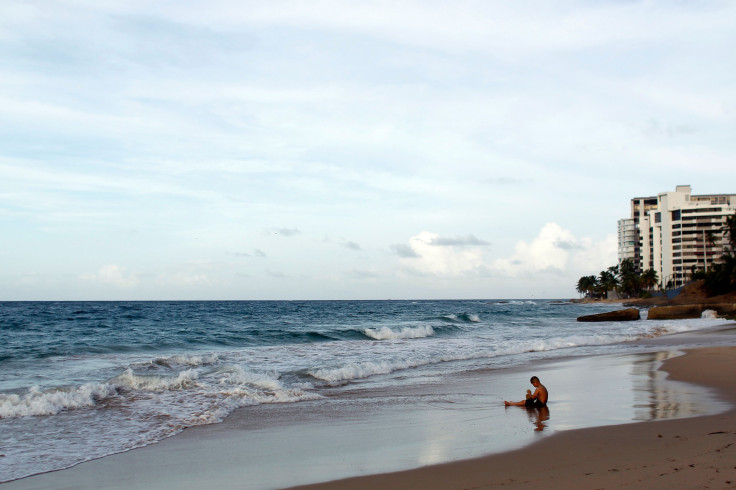Hurricane Maria Hits Puerto Rico, First Category 4 Storm In 85 Years

After wreaking widespread devastation in Dominica, Category 5 Hurricane Maria made landfall Wednesday morning near Yabucoa, Puerto Rico, after lashing the Virgin Islands.
The National Hurricane Centre issued an official statement on their website saying, "Geostationary satellite images and surface observations indicate that the center of Hurricane Maria made landfall near Yabucoa, Puerto Rico, around 615 AM AST (6.15 a.m. EDT). A sustained wind 60 mph (96 km/h) with a wind gust to 113 mph (182 km/h) was recently reported at Yabucoa Harbor, Puerto Rico. A National Ocean Service tide gauge at Yabucoa Harbor, Puerto Rico, recently reported a water level of 4.3 ft above Mean Higher High Water (MHHW)."
A webcam footage also emerged on Twitter showing heavy winds as the hurricane made landfall at Yabucoa.
ACTUALIZACIÓN
— Temporada Ciclónica RD (@TemporadaCiclon) September 20, 2017
Así recibieron en Yabucoa Puerto Rico a los vientos de 155mph del #HuracanMaria pic.twitter.com/LjIjn2iFPQ
Storm chaser Jeff Piotrowski tweeted that Hurricane Maria is the first Category 4 storm to hit Puerto Rico in 85 years.
First Category 4 landfall in Puerto Rico since 1932 #HurricaneMaria #PuertoRico
— Jeff Piotrowski (@Jeff_Piotrowski) September 20, 2017
Thousands of people in Puerto Rico have taken refuge in shelters, with officials warning that Maria will have a far greater impact there than Irma, the Guardian reported.
Authorities have been warning Puerto Ricans since Tuesday night to "evacuate or die" as Hurricane Maria, the most powerful storm to threaten the region in almost 90 years, made its way to landfall.
Maria, which left one dead in the Caribbean, is forecasted to remain a category 4 or 5 hurricane after hitting Puerto Rico and the Virgin Islands, the National Hurricane Center (NHC) said, ABC News reported.
Maria is expected to trigger 6- to 9-foot storm surges and herald grave floodings; mudslides are also expected, especially in mountainous regions of Puerto Rico.
According to Orelon Sidney, a meteorologist for The Weather Channel, Maria should weaken as it crosses Puerto Rico, but it's still expected to remain a Category 4 storm as late as Friday night. "As far as destruction is concerned, the distinction is immaterial, whatever a 5 can do, a 4 can do,” NBC News reported.
Puerto Rico Gov. Ricardo Rossello also called Maria as "potentially the most catastrophic hurricane to hit" the unincorporated U.S. territory in a century.
"We have not experienced an event of this magnitude in our modern history. Now we’re looking down the barrel of Maria, a historic Category 5 hurricane. Although it looks like a direct hit with major damage to Puerto Rico is inevitable, I ask for America’s prayers.No matter what happens here in the next 36 hours, Puerto Rico will survive, we will rebuild, we will recover and with your support, we will come out stronger than ever,” he said.
U.S. President Trump also tweeted his thoughts to those on the island, and said, "Puerto Rico being hit hard by new monster Hurricane. Be careful, our hearts are with you- will be there to help!"
After hitting Puerto Rico, the storm is expected to turn north, near the Dominican Republic, potentially with winds over 100 mph. Maria is then expected to continue north, avoiding the Turks and Caicos islands, the Bahamas and Florida, before ending up out to sea.
© Copyright IBTimes 2025. All rights reserved.






















